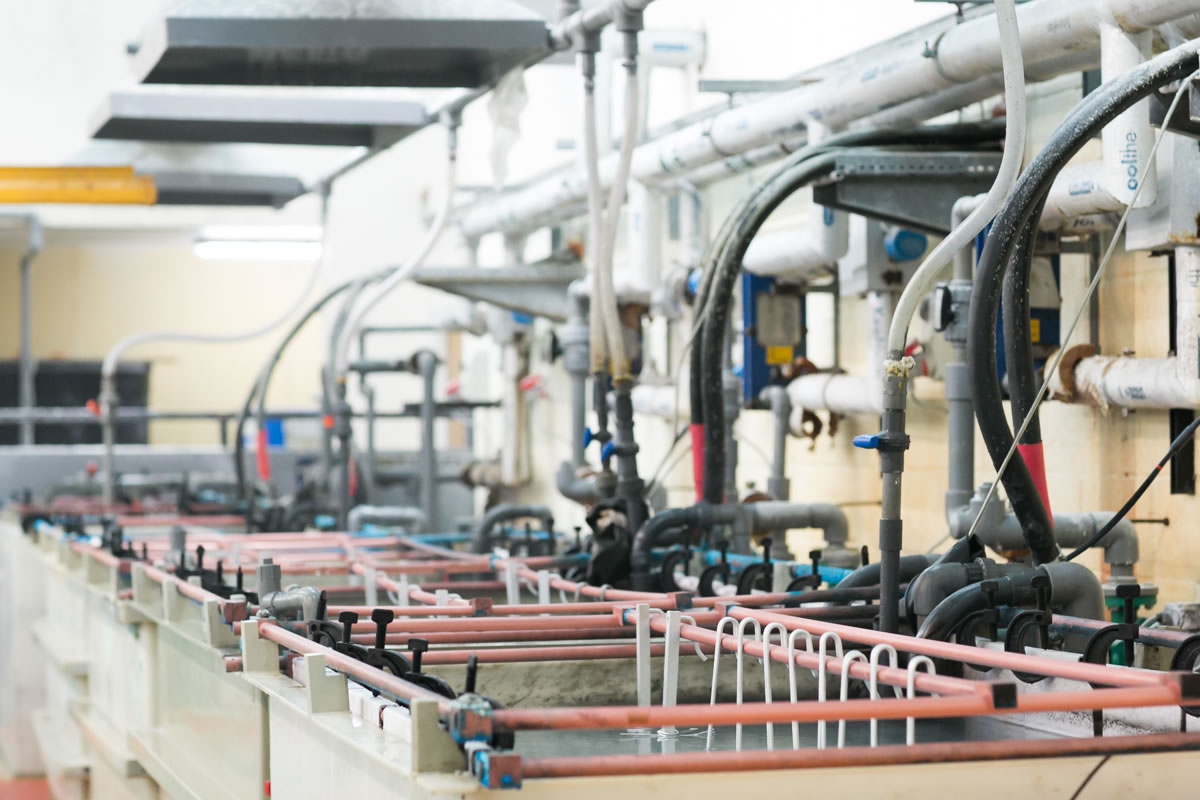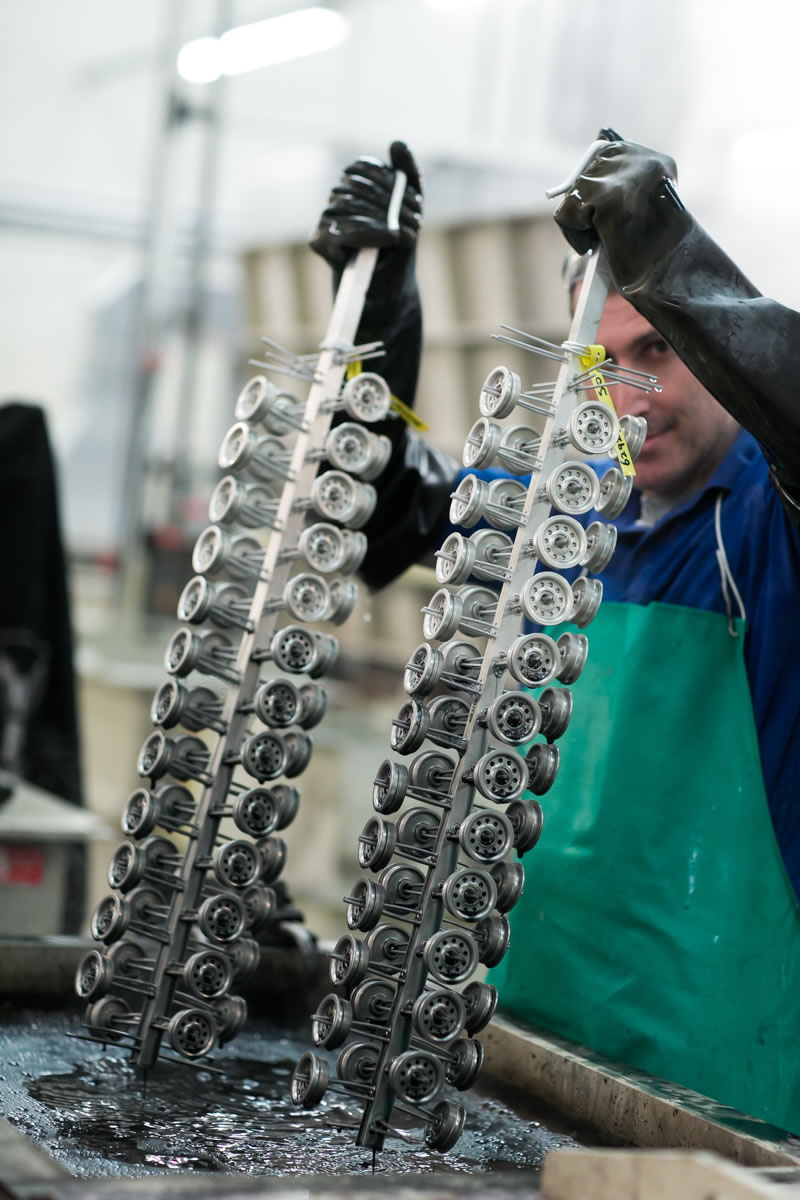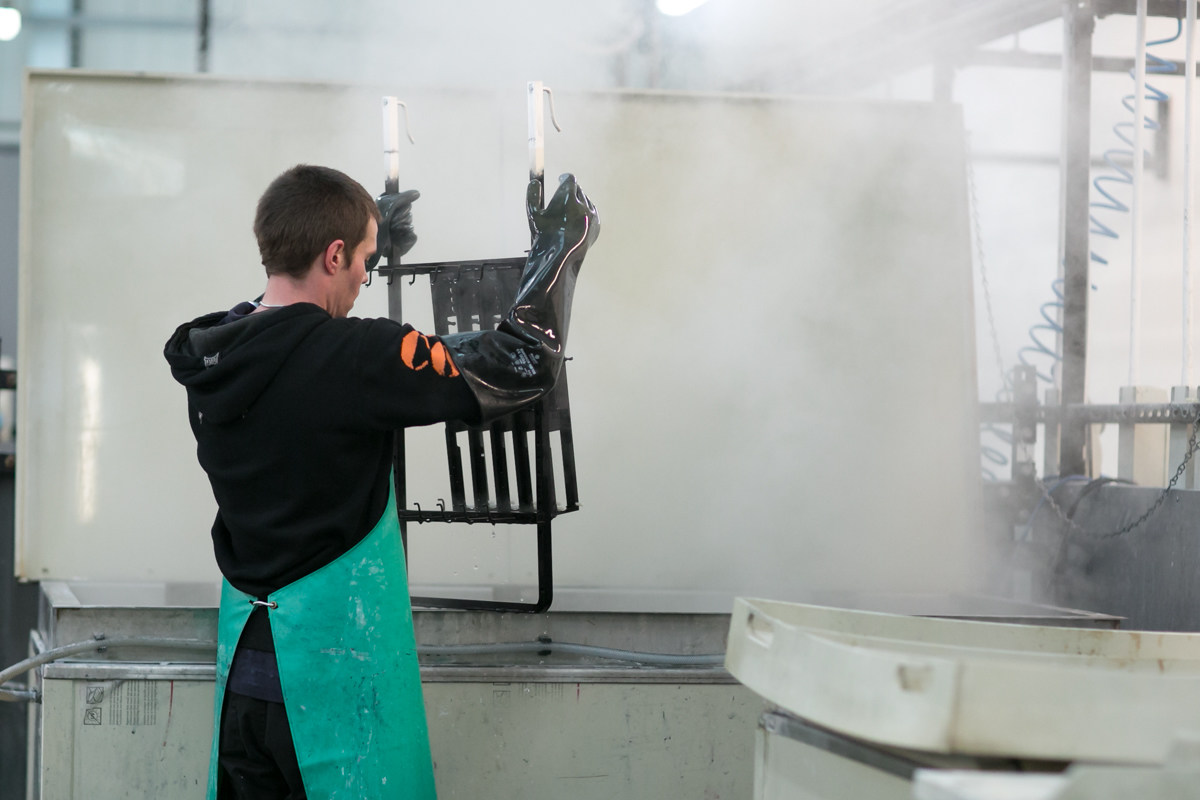Untreated aluminium naturally produces a protective oxide coating on exposure to the atmosphere. Whilst this natural oxidisation offers some protection from corrosion, it is very thin and therefore should not be considered suitable for long term protection. This coating can however be replicated and improved by anodising.
“Anodising is an electrochemical process used to produce durable and decorative finishes on components made of aluminium or aluminium based alloys.”
Alpha Anodising offers two types of Anodising.
Standard Sulphuric Acid Anodising
This type of decorative anodising is used extensively for general industrial, household and architectural applications. Alpha has also used this type of anodising to create artwork pieces due the fact that the resulting anodic film can be dyed to produce an attractive quality finish to any anodised component.
Hard Anodising
Hard anodising covers a number of processes which are based on the use of specialist acid solutions, high voltage and current density electrical conditions, to produce a particularly hard anodic coating with excellent wear and corrosion resistant properties. These coatings have particular advantages on aluminium used for specialist engineering components where the properties of light weight plus a hard surface are of particular benefit.
The hard anodising process at Alpha is available to BS5599/DEF STAN 03-26 and MIL-A-8625 with typical coatings of 35-50 microns, although thicker coatings are available if required. Please speak to the team at Alpha for further advice and information.
Hard Anodising is suitable for dying Black, however unlike Standard Sulphuric Anodising, due to the properties of the anodic film it is not usually suitable for dying colours. Hard Natural Anodising can however be controlled to produce anything from a light to very dark grey colouration (depending on film thickness and grade of aluminium used).
The standard colours on offer are:
This type of decorative anodising is used extensively for general industrial, household and architectural applications. Alpha has also used this type of anodising to create artwork pieces due the fact that the resulting anodic film can be dyed to produce an attractive quality finish to any anodised component.
Bordeaux Red
Fiery Red
Green
Blue
Gold
Black
Bronze
HLN Grey
Other non-standard colours are also available. Speak to Alpha for more information on what other colours we are able to offer.
As the anodic film produced during this type of anodising is translucent, it not only means that the components can be dyed a colour but also mechanically and/or chemically pre-treated to provide different textures which show through resulting anodic film.
Conversion Coatings
Conversion finishes are a non-electrolytic method of protecting the surface of aluminium and its alloys by a chemical immersion process. These finishes are particularly suitable as paint primers and also where electrical conductivity plus corrosion resistance is required. The process that is most widely used in industry, and available from Alpha is:
NCP Iridite
A colourless non-chromium passivate for aluminium. Iridite NCP is used and designed to be an alternative for the more traditional Alocrom 1000 and provides very similar corrosion resistance properties whilst maintaining electrical conductivity and an excellent base for painting.
Iridite NCP is REACH and RoHS compliant and contains no chromium at all.
Contact us with your questions about any aspect of our services.





